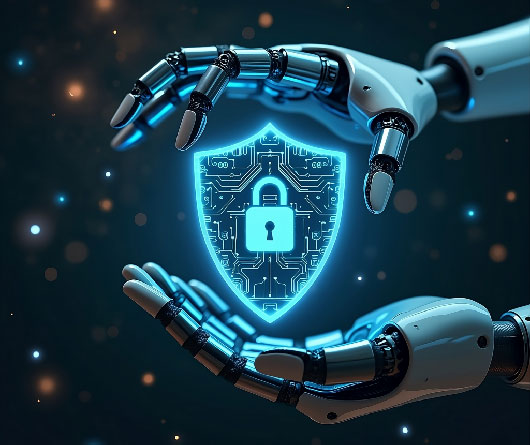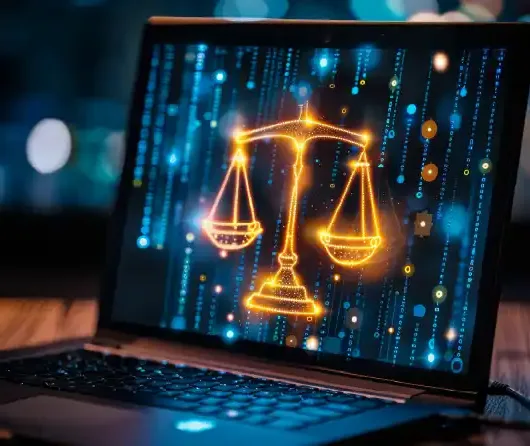Call Us:
Sales (India): +91 91488 14400
Sales (USA): +1 267 703 5359
HR: +91 80250 34302
The Evolution of Cyber Threats: How Attack Vectors Have Changed Over the Decades
- Home
- The Evolution of Cyber Threats: How Attack Vectors Have Changed Over the Decades
In the ever-evolving landscape of technology, cyber threats have become increasingly sophisticated and pervasive. From the early days of simple viruses to the complex, multi-faceted attacks we see today, understanding the evolution of these threats is crucial for developing effective cybersecurity strategies. This blog delves into the history of cyber threats, examining how attack vectors have changed over the decades and what this means for the future of cybersecurity.

The Dawn of Cyber Threats
1970s – 1980s: Early Viruses and Worms
The concept of a computer virus was first introduced in the early 1970s, but it wasn’t until the 1980s that these threats began to gain prominence. One of the earliest known viruses, the “Creeper” virus, was created as an experimental self-replicating program on the ARPANET, the precursor to the modern internet. The Creeper virus displayed a simple message, “I’M THE CREEPER: CATCH ME IF YOU CAN.”
Following this, the “Elk Cloner” virus emerged in 1982, targeting Apple II computers via floppy disks. It spread by attaching itself to the boot sector of the disk, displaying a short poem upon infection. These early viruses were relatively benign compared to modern standards, often created by curious programmers as experiments or pranks.
The Rise of Malware
The 1980s also saw the emergence of more malicious software, or malware. The “Brain” virus, developed in 1986, is notable as the first IBM PC-compatible virus. It infected the boot sector of floppy disks and was created by two Pakistani brothers ostensibly to protect their medical software from piracy. However, it inadvertently spread far and wide, highlighting the potential for widespread disruption.
The 1990s: The Internet Roar and Early Threats
Network Propagation
The 1990s marked the beginning of widespread internet adoption, which brought new opportunities for cyber threats to proliferate. The “Morris Worm” of 1988 was one of the first worms to gain significant attention. Created by a Cornell University student, it exploited vulnerabilities in UNIX systems to spread across the internet, causing substantial slowdowns and disruptions.
The Advent of Email Viruses
As email became a ubiquitous communication tool, it also became a prime vector for cyber threats. The “Melissa” virus in 1999 was one of the first major email viruses. It spread through infected Microsoft Word documents sent via email, causing widespread disruption by overloading mail servers. This was followed by the “ILOVEYOU” virus in 2000, which spread even more rapidly through infected email attachments, causing billions of dollars in damage globally.
The 2000s: Sophistication and Specialization
Targeted Attacks and Botnets
The early 2000s saw a shift towards more sophisticated and targeted cyber attacks. The rise of botnets, networks of infected computers controlled by cybercriminals, allowed for coordinated attacks on a massive scale. Botnets were used to launch Distributed Denial of Service (DDoS) attacks, overwhelming targeted websites or services with traffic and causing them to become inaccessible.
Advanced Persistent Threats (APTs)
Advanced Persistent Threats (APTs) emerged as a significant concern in the mid-2000s. Unlike earlier attacks, which were often opportunistic and indiscriminate, APTs are highly targeted and involve prolonged campaigns aimed at specific organizations or sectors. These attacks are often state-sponsored and focus on stealing sensitive information or causing strategic damage. Notable examples include the “Stuxnet” worm, discovered in 2010, which targeted Iran’s nuclear facilities.
The 2010s: The Era of Ransomware and Mobile Threats
Ransomware Epidemic
The 2010s saw the rise of ransomware as a major threat. Ransomware encrypts a victim’s files, demanding payment (often in cryptocurrency) in exchange for the decryption key. The “WannaCry” ransomware attack in 2017 affected hundreds of thousands of computers in over 150 countries, including critical infrastructure like hospitals and transport systems. Ransomware-as-a-Service (RaaS) platforms also emerged, lowering the barrier for entry for cybercriminals and leading to a surge in ransomware incidents.
Mobile and IoT Threats
As smartphones and Internet of Things (IoT) devices became integral to daily life, they also became targets for cyber threats. Mobile malware, such as the “Triada” and “HummingBad” Trojans, infected millions of Android devices, stealing data and displaying intrusive ads. IoT devices, often lacking robust security measures, became a new frontier for cyber attacks. The “Mirai” botnet in 2016, which hijacked IoT devices to launch massive DDoS attacks, highlighted the vulnerabilities in these connected devices.
The 2020s: The Age of Artificial Intelligence and Nation-State Attacks
AI-Driven Cyber Threats
The current decade is witnessing the integration of artificial intelligence (AI) and machine learning in both cyber attacks and defenses. AI can be used to automate attacks, identify vulnerabilities, and evade detection. For example, AI-driven phishing attacks can craft highly personalized and convincing emails, increasing the likelihood of success.
Nation-State Cyber Warfare
Nation-state cyber attacks have become more prevalent and sophisticated, often targeting critical infrastructure and leveraging zero-day exploits—previously unknown vulnerabilities. The “SolarWinds” attack, discovered in 2020, is a prime example. It involved a supply chain attack on IT management software, compromising numerous government and private sector networks.
The Role of Cybersecurity Frameworks
In response to the growing complexity of cyber threats, organizations are increasingly adopting comprehensive cybersecurity frameworks. Standards such as the NIST Cybersecurity Framework and the ISO/IEC 27001 provide guidelines for managing and mitigating cyber risks. These frameworks emphasize the importance of continuous monitoring, incident response, and employee training.
Conclusion: Preparing for the Future
The evolution of cyber threats underscores the need for robust and adaptive cybersecurity measures. As technology advances, so do the tactics of cybercriminals and nation-state actors. Staying ahead of these threats requires a combination of advanced technologies, vigilant monitoring, and proactive defense strategies. Organizations must invest in cybersecurity infrastructure, foster a culture of security awareness, and remain informed about emerging threats and trends.
By understanding the history and evolution of cyber threats, we can better anticipate future challenges and develop resilient systems to protect our digital assets. The fight against cyber threats is an ongoing battle, but with the right tools and strategies, we can navigate this ever-changing landscape and secure our digital future.
Read More
Address
-
First Floor, Rathi Legacy-
Rohan Tech Park,
Seetharampalya - Hoodi Road,
Doddanakundi Industrial Area 2,
Seetharampalya, Hoodi,
Bengaluru, Karnataka – 560048













